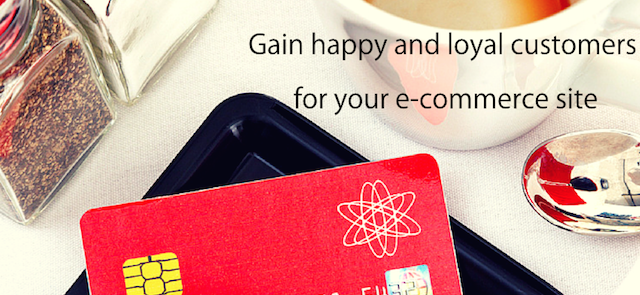 Renata Gajoch-Bielecka
created
edited
Renata Gajoch-Bielecka
created
edited
Simplifying the checkout process on your e-commerce site
Back to list of articlesThere is no doubt that the future is bright for online retail. This past holiday shopping season was a clear indicator that people are embracing the idea of shopping online more than ever before and brick-and-mortar stores are clearly feeling the pinch.

The advantage that brick-and-mortar stores still have over any online retailer is that it is still less likely that someone walking in to an actual physical store will walk out without making a purchase, and virtually no one decides while standing in line at checkout to abandon their cart and leave, even if lines are long, because going to the store takes time and most people would opt not to waste more of their time than necessary.
For online retailers, however, cart abandons are a real issue. Once someone decides to place an item in his or her cart, it's your job to make sure that visitor becomes a customer, and the best way to accomplish that is by making the process of buying from you as efficient, easy, and free of distractions as possible. Here are a few ways to accomplish those goals and gain happy and loyal customers for your e-commerce site.
1. Do not require registration
While this may make for a more convenient buying experience on subsequent visits, it can be a turnoff to some customers. Be sure to give them the option to either register or check out as a guest. Signup forms are time-consuming and if you force people to fill them out, you are inviting cart abandons. You want to hold the door open for your customers, not force them to push it themselves.
2. Display item availability status
Make sure your customers are informed if an item is in or out of stock before they begin the checkout process. You will not capture that sale by blindsiding customers with a “rain check” or email notification when the item becomes available. Give them those options, but don't make them go through checkout if you don't have what they want.
You might even take it a step further and show stock levels on the search results page. It's a great way to establish trust and ensure the customer will at least consider you when looking to purchase something else later on.
3. Make order modification simple
Make it easy for customers to fix mistakes, like clicking the wrong item or deciding they just don't want something anymore. A simple “delete item” button that doesn't force them to start from scratch will likely salvage other items in the cart. Make them start over, and they just might decide to start over someplace else.
Along with a delete button, always have the option available to modify quantities as well. Who knows, they might decide they want two of those ceramic heaters, one for the house and one for the office. Make it easy for them to change their minds.
4. Provide real-time support
Nothing will make a customer abandon faster than having a problem that can't get solved instantly. At a minimum, you need to provide a Web interface that is set up to handle the most common checkout issues. At best, you should invest in live, real-time support via phone or chat. Yes, it's expensive and many smaller sites just can't afford it, but it is something to consider and plan to implement as you grow.
5. Keep the back button functional
You will make no friends with form resubmissions or automatic redirects. You want to maintain a “smart cart” that remembers what customers put in it so that if they navigate away, they can come back and continue right where they left off. This should also be the case if they click any link that takes them off the checkout page.
6. Provide photos, item summaries, and links for items in the customer's basket
Since online shopping relies heavily on visuals to make sales, it just makes sense to give the customer the opportunity to take a visual inventory of what is in the cart and review the details of each item if he or she so chooses. Visuals also stimulate memories, and you might just remind a customer to grab something else before completing the purchase. When that happens, be sure #5 has been implemented.
7. Use a progress indicator
Chances are that checking out is a multistep process on your site. If so, it's good to let customers see (there's that visual angle again) where they are in the process. Leave them in the dark and have them jumping through too many pages just to pay you, and they might abandon out of frustration. That leads nicely into the next tip.

8. Provide a simple checkout interface
Progress indicators are a great idea, but if the process is too complicated, it won't help you retain the sale. Also, you want to create a buying environment that is free of distractions. Eliminate any links that don't relate directly to the purchase. This is not the time to fish for clicks that accomplish anything except completing the sale.
Building a pleasurable checkout experience is about clearing away distractions, providing the information customers need to understand the process, and making it as easy as possible. Master that formula, and you will minimize abandons and maximize your number of happy (and repeat) customers.
Don't forget to use the power of email marketing to increase the sales in your e-commerce site!

